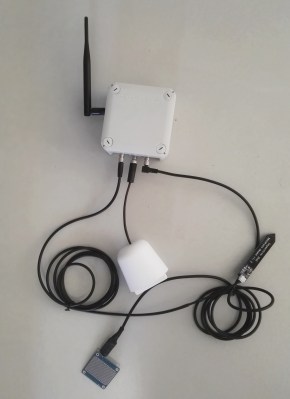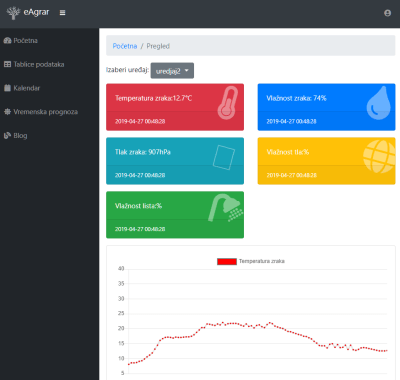THE ANONYMOUS
Croatian engineers [Slaven Damjanovic] and [Marko Čalić] have developed a wireless system for farmers to monitor plant conditions and weather along their agricultural fields. The system uses an RFM95W module for LoRa communication, and devices are designed to be plug-and-play, battery-powered, and have long-range communication (up to 10km from the gateway).
It uses an ATMega328 microprocessor, and includes sensors for measuring soil moisture (FC28 sensor), leaf moisture (FC37 sensor), pressure (BME280 sensor), and air temperature and humidity (DHT22 or SHT71 sensor). The data is sent to a multichannel The Things Network gateway that forwards the information to an external database, which then displays the data through a series of graphs and tables.
The software for sending messages to the gateway is based on the LoRa MAC in C (LMIC) and LowPower libraries and was developed by [ph2lb].
The purpose for the plastic enclosure to not only aesthetic, but it also protects the temperature and humidity sensors from direct exposure to sunlight and rain, which could affect the readings and create water leakage into the device. The custom 3D-printed enclosure is water-proof and works as a solar radiation shield to protect eAgrar from direct and reflected solar radiation.

The goal of the project has been to help fight against climate change, which has had a negative effect on agricultural production due to weather shocks and a lack of predictability in information from fields. Farmers have had to rely on using pesticides and chemical agents to prevent the development of diseases, which in turn pollutes the environment. The team hopes that eAgrar will provide more information to predict the appearance of disease and help farmers reduce costs, reduce damages to their plants, increase their yields, and increase the quality of their crops over time, all while using chemical agents less frequently and in smaller quantities.
The device uses a real-time clock (RTC) as a wakeup alarm and is powered by a 3.7V Li-Ion battery with a life of one year, although there is also a 5V boost converter for powering up to four 5V sensors. Their custom PCBs from JLCPCB have rust-resistant pads and vias, and remain high quality even at high temperatures.
For the LoRa wireless sensor network, the system set up allows the devices to be controlled remotely even when they are not connect to the Internet. Settings such as sleep time and communication parameters can be modified without reprogramming the device.


Currently, the Dashboard remains in Croatian, but it offers a wealth of information such as last measurements, graphs of temperature and moisture measurements, a data table with all data from the start of the device life, and a calendar for the user to use for recording notes.

from Hackaday https://ift.tt/2mDvgKi
No comments: